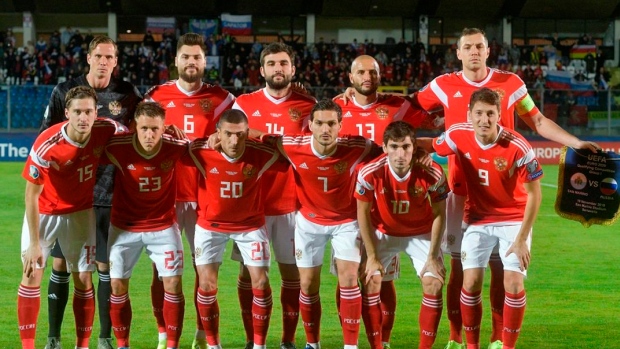The Impact of Injuries on Soccer Performance
Soccer, the world’s most popular sport, demands a unique blend of physicality, technical skill, and mental fortitude. The relentless pace, dynamic movements, and constant competition place immense strain on players’ bodies, making injuries an inevitable part of the game. This article delves into the multifaceted impact of injuries on soccer performance, analyzing their prevalence, causes, types, management, and the broader consequences on individual players, teams, and the sport itself.
Prevalence and Patterns: A Growing Concern

Research consistently highlights the high prevalence of injuries in soccer. Studies indicate that professional players experience an average of 1 to 2 injuries per season, with a significant proportion resulting in time away from the field. The incidence and severity of injuries vary across different playing levels, with younger players and those competing at higher levels experiencing higher rates of injury.
Age and Competition Level
- Younger players are more susceptible to injuries due to their ongoing physical development and lower injury prevention awareness.
- Elite-level players face increased injury risks due to the intense demands of competition, frequent travel, and high-intensity training regimens.
Playing Surface and Environment
- Artificial turf surfaces have been linked to higher rates of non-contact injuries, particularly those affecting the lower extremities.
- Extreme weather conditions, such as heat or cold, can increase the risk of dehydration, muscle cramps, and other environmental-related injuries.
Injury History and Recurrence
Players with a history of previous injuries are more likely to sustain similar injuries in the future, highlighting the importance of comprehensive rehabilitation and injury prevention strategies.
See more: nhận định kèo nhà cái
Causes of Injuries: A Complex Interplay of Factors

Several factors contribute to the development of soccer injuries, ranging from intrinsic player characteristics to extrinsic environmental influences.
Intrinsic Factors
Age and Maturity
Younger players are more susceptible to injuries due to their ongoing physical development and lower injury prevention awareness.
Physical Characteristics
- Body composition, muscle imbalances, and anatomical variations can predispose players to certain types of injuries.
- Factors like flexibility, strength, and proprioception play a crucial role in injury prevention and recovery.
Psychological Factors
- Stress, anxiety, and mental fatigue can impact a player’s focus, decision-making, and overall performance, increasing the risk of injury.
Extrinsic Factors
Playing Surface and Environmental Conditions
- Artificial turf surfaces, uneven terrain, and extreme weather conditions (heat, cold, rain) can contribute to injuries.
- Inadequate field maintenance or poor equipment quality may also increase injury risks.
Training and Match Loads
- Excessive training loads, insufficient recovery periods, and inadequate load management can lead to overuse injuries and burnout.
- High-intensity matches and tournaments with limited rest periods can also contribute to injury risk.
Playing Style and Tactics
- Certain playing styles, such as those involving frequent sprinting, tackling, or aerial challenges, may increase the likelihood of specific injuries.
- Tactical decisions, like playing positions and substitution patterns, can also influence injury rates.
See more: Soi kèo Hàn Quốc
Types of Injuries in Soccer

Soccer players are susceptible to a wide range of injuries, affecting various body parts and resulting from different mechanisms. Understanding the most common types of injuries is crucial for proper management and prevention strategies.
Acute Traumatic Injuries
Sprains and Strains
- Ankle sprains are among the most common injuries, often resulting from sudden changes in direction or landing awkwardly.
- Hamstring strains, groin strains, and quadriceps strains are also prevalent due to the high demands on the lower extremities.
Fractures and Dislocations
- Collisions, tackles, and falls can lead to fractures, particularly in the lower limbs, wrists, and hands.
- Dislocations, such as those involving the shoulder or fingers, can occur during falls or direct contact with other players.
Head Injuries and Concussions
- Head-to-head collisions, collisions with other players or the goal post, and unintentional elbows can result in concussions or other head injuries.
- Proper management and return-to-play protocols are crucial for preventing long-term effects and ensuring player safety.
Overuse Injuries
Tendinopathies
- Overuse of specific muscle groups can lead to tendinopathies, such as Achilles tendinitis, patellar tendinitis, and adductor tendinopathy.
- These injuries often result from repetitive stress and inadequate rest and recovery.
Stress Fractures
- Stress fractures, particularly in the lower limbs, can occur due to excessive loading and inadequate bone recovery.
- Proper load management, footwear, and training surface conditions are essential for prevention.
Muscle Strains and Overuse Injuries
- Repetitive movements and inadequate recovery can lead to muscle strains and overuse injuries in various muscle groups, including the hamstrings, quadriceps, and calves.
Injury Management and Rehabilitation
Effective injury management and rehabilitation are crucial for minimizing the impact of injuries on soccer performance and ensuring a safe and timely return to play.
Immediate Care and Assessment
- Prompt assessment and evaluation by medical professionals, such as team doctors and physiotherapists, are essential for accurate diagnosis and appropriate treatment planning.
- Immediate care, including RICE (Rest, Ice, Compression, Elevation) and first aid measures, can help reduce inflammation and promote healing.
Rehabilitation and Recovery
- Personalized rehabilitation programs, incorporating various modalities like physiotherapy, strength training, and conditioning, are crucial for regaining functional abilities and preventing re-injury.
- Adequate rest and recovery periods are essential for allowing the body to heal properly.
Return-to-Play Protocols
- Gradual and progressive return-to-play protocols, involving a stepwise approach to increasing activity levels, are necessary to safe reintegration into training and competition.
- Comprehensive assessments, including functional testing and monitoring of key performance indicators, help determine readiness for full participation.
Injury Prevention Strategies
- Implementing injury prevention programs, focusing on areas like strength training, flexibility, proprioception, and sport-specific conditioning, can help reduce the risk of future injuries.
- Education and awareness about injury mechanisms, risk factors, and prevention strategies are essential for players, coaches, and support staff.
Consequences of Injuries: Far-Reaching Implications
The impact of injuries in soccer extends beyond the physical aspects, affecting players, teams, and the sport as a whole.
Individual Player Consequences
Performance and Fitness Levels
- Injuries can lead to a temporary or prolonged decline in performance levels, as players may struggle to regain their pre-injury form and fitness.
- Psychological factors, such as fear of re-injury, can also impact performance and decision-making on the field.
Career Longevity and Earning Potential
- Severe or recurring injuries can significantly shorten a player’s career, limiting their earning potential and overall professional development.
- The financial implications of injuries, including medical expenses and lost income, can be substantial for both players and clubs.
Team Consequences
Squad Depth and Team Dynamics
- Injuries can disrupt team dynamics, as replacements or new formations may be required, potentially impacting team chemistry and performance.
- Depleted squad depth due to multiple injuries can strain resources and increase the workload on remaining players.
Tactical Adaptations and Strategic Adjustments
- Coaches may need to adjust tactics, formations, and playing styles to compensate for the absence of key players due to injuries.
- These adjustments can have far-reaching consequences on team performance and competitiveness.
Broader Implications for the Sport
Financial Impact on Clubs and Organizations
- Injuries can result in significant financial burdens for clubs and organizations, including medical expenses, player salaries during recovery periods, and potential transfer fees for replacements.
- Sponsorship and broadcasting revenues may also be affected if star players or high-profile teams underperform due to injuries.
Fan Engagement and Media Attention
- Injuries to high-profile players can negatively impact fan engagement, attendance, and media attention, potentially affecting the sport’s overall popularity and commercial value.
- Extended absences of star players can also diminish the spectacle and excitement surrounding the game.
Conclusion
The impact of injuries on soccer performance is multifaceted and far-reaching, affecting players, teams, and the sport itself. Preventing and effectively managing injuries is crucial for maintaining optimal performance, safeguarding player well-being, and preserving the integrity and competitiveness of the game. Through continuous research, improved injury prevention strategies, and comprehensive rehabilitation programs, the soccer community can strive to mitigate the consequences of injuries and promote a safer and more sustainable environment for players at all levels.
Conclusion
In conclusion, injuries are an inherent risk in soccer, with players facing a variety of acute traumatic and overuse injuries that can have significant consequences on their performance, careers, and overall well-being. Understanding the common types of injuries, implementing effective injury prevention strategies, and ensuring proper management and rehabilitation are essential steps in safeguarding player health and optimizing performance.
From sprains and strains to fractures, concussions, tendinopathies, and stress fractures, soccer players are susceptible to a range of injuries that can impact their ability to compete at the highest level. Immediate care, accurate diagnosis, personalized rehabilitation programs, and gradual return-to-play protocols are vital components of injury management that can help players recover safely and efficiently.
The consequences of injuries extend beyond individual players to affect teams, organizations, and the sport as a whole. Squad depth, team dynamics, tactical adaptations, financial implications, fan engagement, and media attention are all influenced by the prevalence and severity of injuries in soccer. By prioritizing injury prevention, education, and research, the soccer community can work towards creating a safer and more sustainable environment for players of all ages and skill levels.
In conclusion, the impact of injuries on soccer performance underscores the importance of proactive measures to mitigate risks, promote player safety, and uphold the integrity of the game. By prioritizing injury prevention, effective management, and comprehensive rehabilitation, stakeholders in the soccer community can strive towards a future where injuries are minimized, players are supported in their recovery, and the sport continues to thrive on and off the field.
